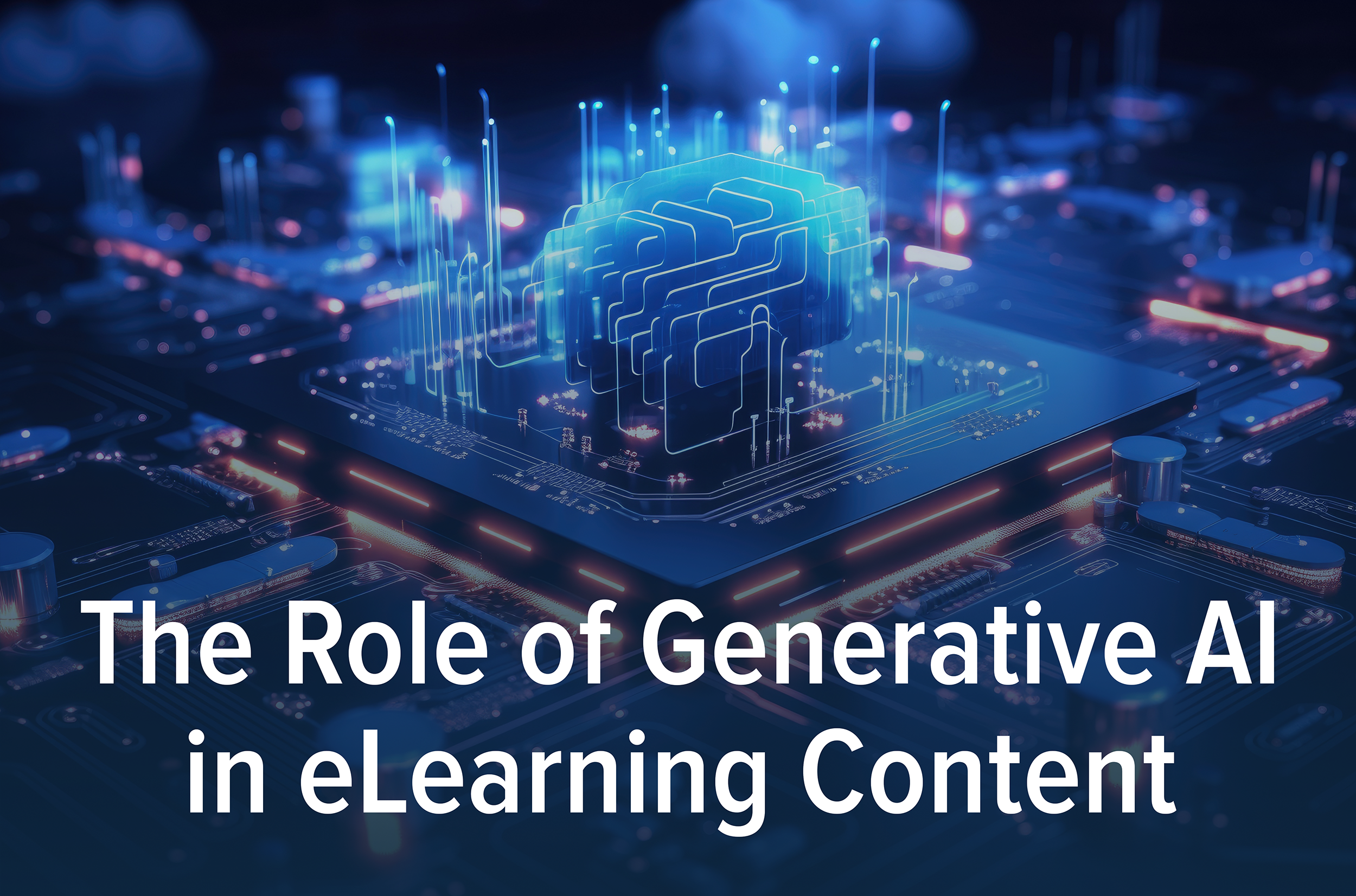In 2022, we took the pandemic “new normal” for what it’s worth and made it our own. The workforce has settled into a spectrum of anything from remote to in-person, and everything in between. Just as fast as we needed virtual solutions, we then needed hybrid and blended solutions to accommodate organizations operating anywhere on the work spectrum.
Over the past few years, online learning has been used to train and develop workforces across industries in innovative ways with impressive results:
- Since 2000, the eLearning industry has grown by 900%, making it the fastest-growing market in the education industry by a large margin.
- 40% of Fortune 500 companies use online learning for professional development with over 72% of American organizations believing online learning gives them a competitive advantage, reported Forbes.
- In the world of healthcare, a review commissioned by the World Health Organisation (WHO) and carried out by Imperial College London researchers concludes that online learning is likely to be as effective as traditional methods for training health professionals.
Online learning has been shown to quickly and effectively teach and train employees in critical roles, enabling them to reach their highest potential. Return on investment following online learning implementation is demonstrated in many ways. For many, less time spent, more optimized resources, and fewer adverse incidents means dollars saved. For some, it is patient lives saved.
Online learning is here to stay, and its expansion is not slowing down any time soon. As each year comes and goes, organizations find new ways to use online learning as it fits their needs. Here are some of the biggest online learning trends forecasted for 2023.
5 Online learning trends to pay attention to in 2023:
1. Hybrid and blended training
Again, online learning isn’t going anywhere, but it does not have to be an all-or-nothing solution. Many organizations have adopted blended or hybrid learning in some capacity.
So, what do blended and hybrid learning really mean? Blended learning refers to combining the traditional in-person setting with any digital technology. Hybrid learning is the comprehensive approach of combining the best parts of in-person learning with the most effective parts of virtual learning. It’s more than just half in-person, half online. It’s a strategic format that puts the learner at the center of the experience, incorporating the best teaching strategies for better learning and stronger retention.
Hybrid learning has many benefits that suit the modern workforce. For organizations, hybrid learning gives learning and development personnel the freedom to develop training plans that incorporate a variety of teaching tools. Hybrid learning is more flexible and inclusive; it can be done anywhere, anytime, anyhow. It has shown to be more effective than traditional learning. And finally, it can be cost-effective too due to less expenses accrued associated with in-person learning.
2. Personalized learning
In a post-pandemic world, offering virtual options is now the bare minimum. People expect personalization. One-size-fits-all never works, and as it turns out, it is an expensive waste of time for employees and the organization. That’s where personalized learning makes a difference, and we see it taking a front seat in the online learning world this year.
An adaptive platform that adjusts to individual learners’ knowledge levels is essential to learning personalization, and thus the overall learning experience. The learning experience is rigorously personalized with adaptive functionality. It cuts learning time in half (sometimes more) by treating each learner as an individual with their own unique mix of mastery, misinformation, uncertainty, and information gaps. By adapting to their knowledge level, trainees don’t waste time relearning things they already know. Instead, they spend more time only on subjects they demonstrate struggle with.
In action, this level of personalization has powerful effects for both trainees and health systems at large. One such example is how UCHealth cut training time by 87.5%, achieved an 86% learner satisfaction score, and experienced $1.45 million in savings by incorporating adaptive learning via learning platform. Where learners typically spent eight hours in the classroom with their previous training system, learners now spend an hour or less on average in training. This not only respects learners’ time, but also increases their time out on the floor, helping patients.
3. Catalog courses
As more organizations turn to online learning in some capacity, the benefits of on-demand course libraries become apparent. Training employees at scale and developing effective, quality content to do so is no small undertaking. That’s when having a selection of courses designed by subject matter experts is invaluable.
For example, Amplifire Healthcare Alliance members benefit from a range of course catalogues, co-developed by Alliance experts: obstetrics, compliance, electronic health records, and more. Alliance members that are challenged to get all their clinicians training online, at scale, in record time implement on-demand courses or modify the course content to their organization’s specifications. Again, personalization comes into play — but this time, for the learning and development team.
4. Microlearning
“Mircolearning” will continue to take the online learning world by storm. The Rapid Learning Institute conducted a survey in which 94% of learning and development professionals stated that they opt for “bite-sized” online learning modules over traditional learning because their learners prefer it. And if subjective “preference” isn’t convincing enough, learning architect Ray Jimenez, Ph.D.’s research concluded that by creating micro-courses, learning developers can reduce development costs by 50% and increase the speed of development by 300%. Microlearning makes sense in a world where attention spans are rapidly shrinking.
There is no official definition of microlearning but as the term implies, all interpretations share the same characteristic: brevity. Perhaps the most familiar interpretation is short-term learning delivered in micro-bursts via text, app notification, email, or other. Another way to deliver microlearning is simply through small learning units. Adherence to brain science principles inherently bring a microlearning feel to learning platforms. Cognitive triggers like motivation, repetition, spacing, and retrieval all create a gamification feel that create a microlearning environment. Features like assessment-based question format, module content breakdown, post-learning refreshers, and adaptive functionality allow for intentionally delivered learning in small bursts at the right time. Learners prefer these “smaller” formats, and businesses benefit from their satisfaction.
5. Immersive learning
What was once technology limited to science fiction, virtual and augmented reality are now tools that can be inexpensively brought into any home, classroom, or office. While virtual reality (VR) may not be a tool appropriate for all topics, it can certainly be useful in certain situations. Aviation and healthcare industries often use simulator training reinforced by online learning to invoke an immersive experience, enriching the training process. Immersive learning isn’t only limited to simulation and virtual reality training; it also includes any training, like hands-on training, that makes it easier to practice skills that, in the real world, carry a high degree of risk whether to people or costly equipment.
Immersive training is a costly investment, which is why online learning is a crucial complement. Often, simulators or VR require pretesting or prior knowledge, which can be efficiently delivered via learning platform. With the learner analytics, learners get the right training at the right time, ensuring no time or resources are wasted. Robust learner analytics capture learner behavior as well, ensuring the efficacy of your training investment when used following an immersive session, therefore maximizing ROI. Smartly implementing immersive learning in 2023 will revolutionize the training world.
As we gain more and more experience with online learning, we find new ways to optimize the way we learn to maximize outcomes. People are learning better and retaining more information, faster. Organizations are spending their employees’ time wisely, and effectively training highly competent and confident workforces. The beneficiaries of these organizations’ services — patients, passengers, etc. — experience more positive outcomes as a result. In the coming year, we look forward to expanding the ways in which Amplifire’s learning platform can help learners and organizations reach their goals and explore new learning possibilities.
From the beginning, Amplifire has relied on innovative brain science to guide its product development to create the most effective learning and training solution, perfectly tailored to the way the human brain works. Learn more about how Amplifire helps people learn better and faster with online learning by requesting a demo.



